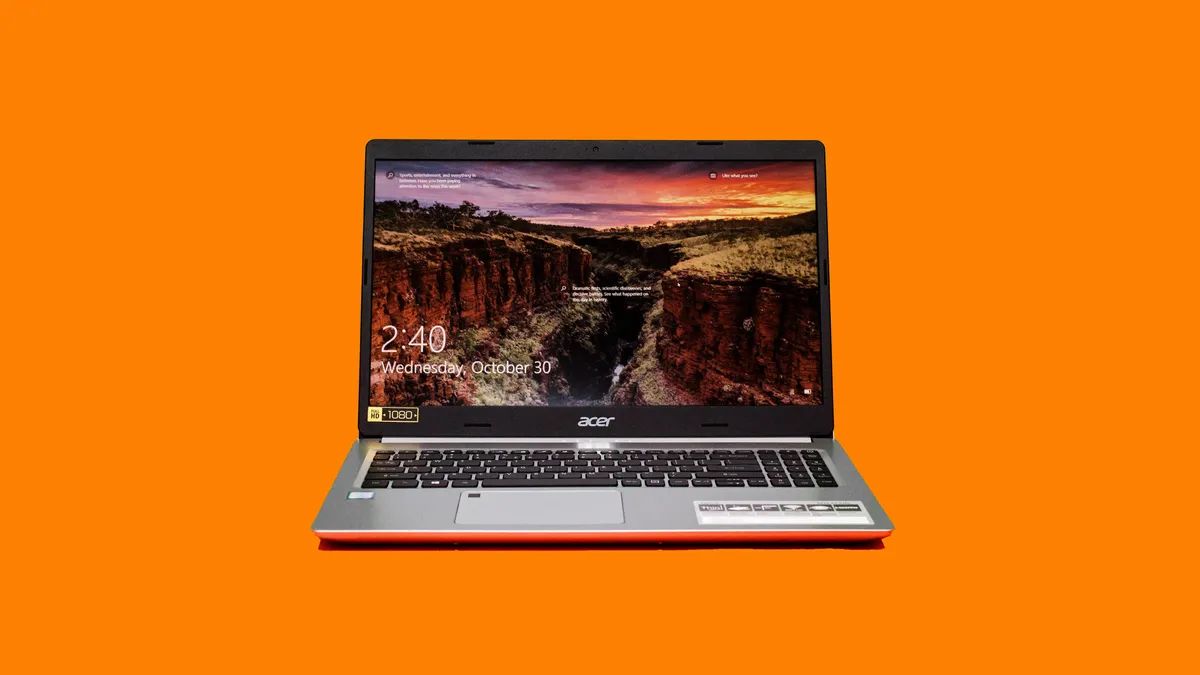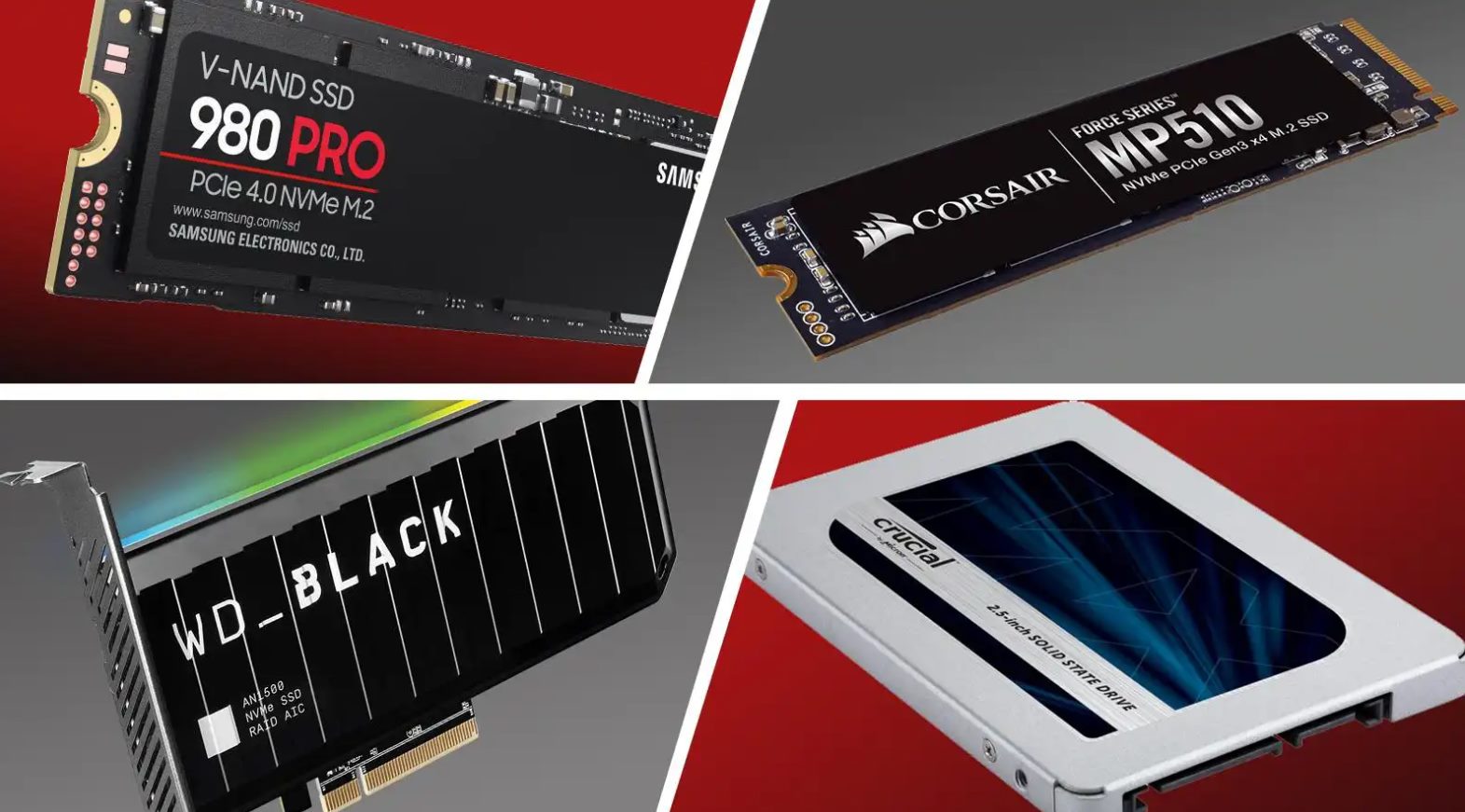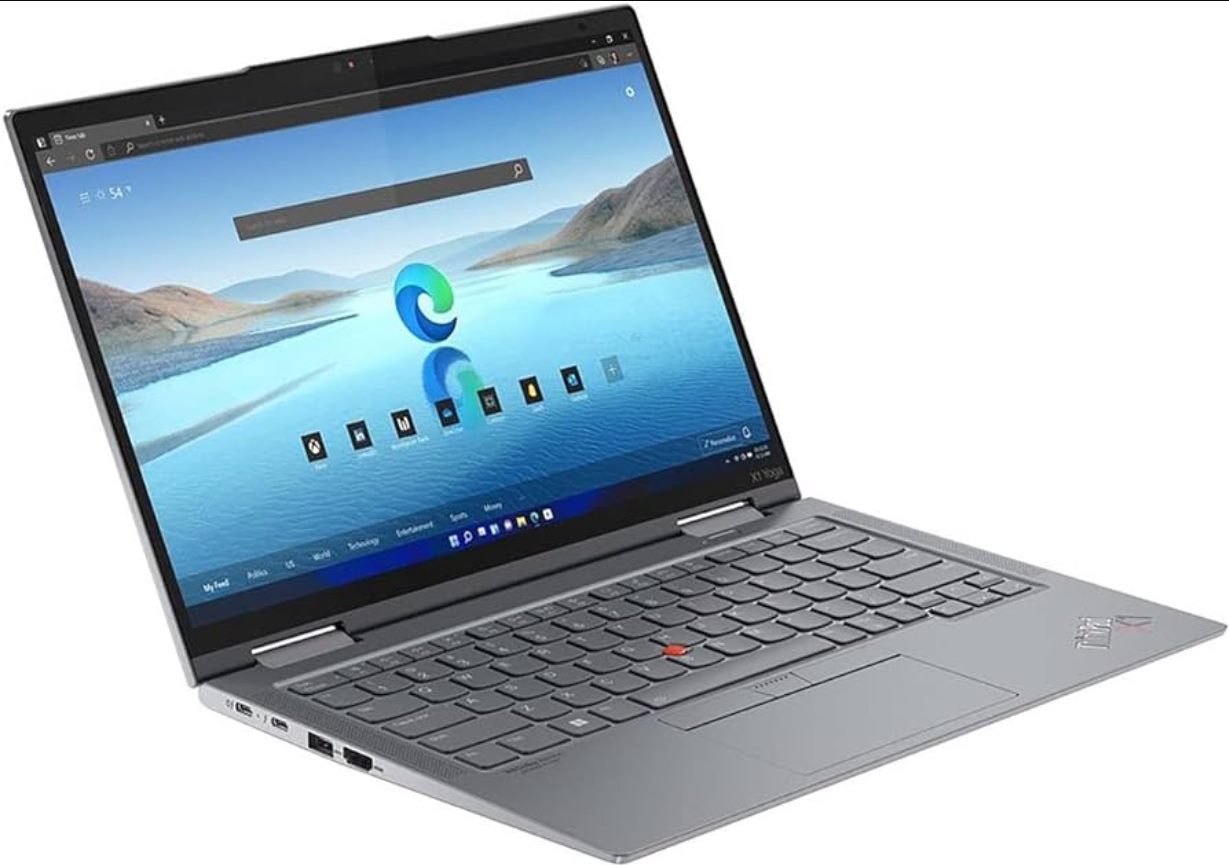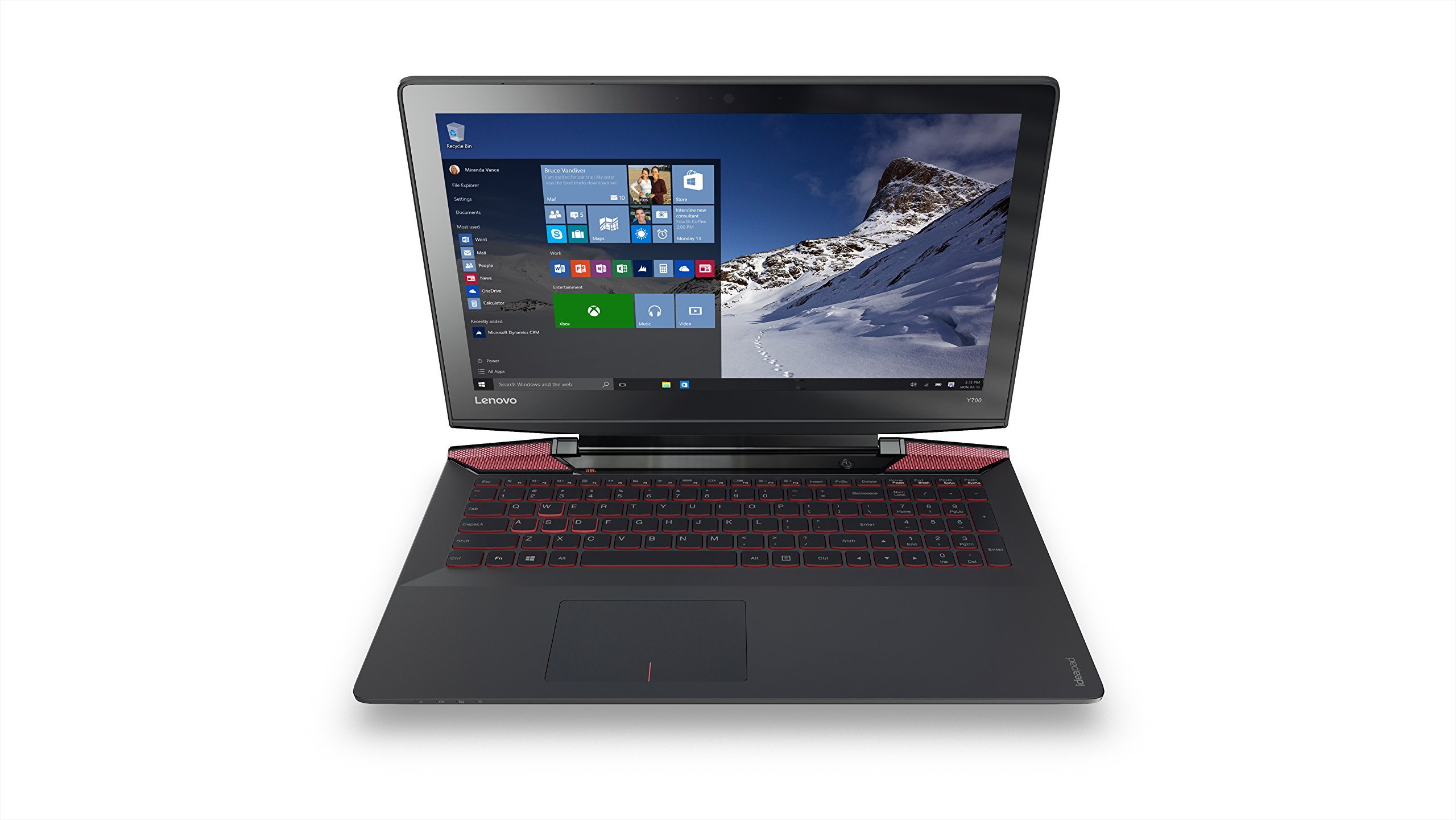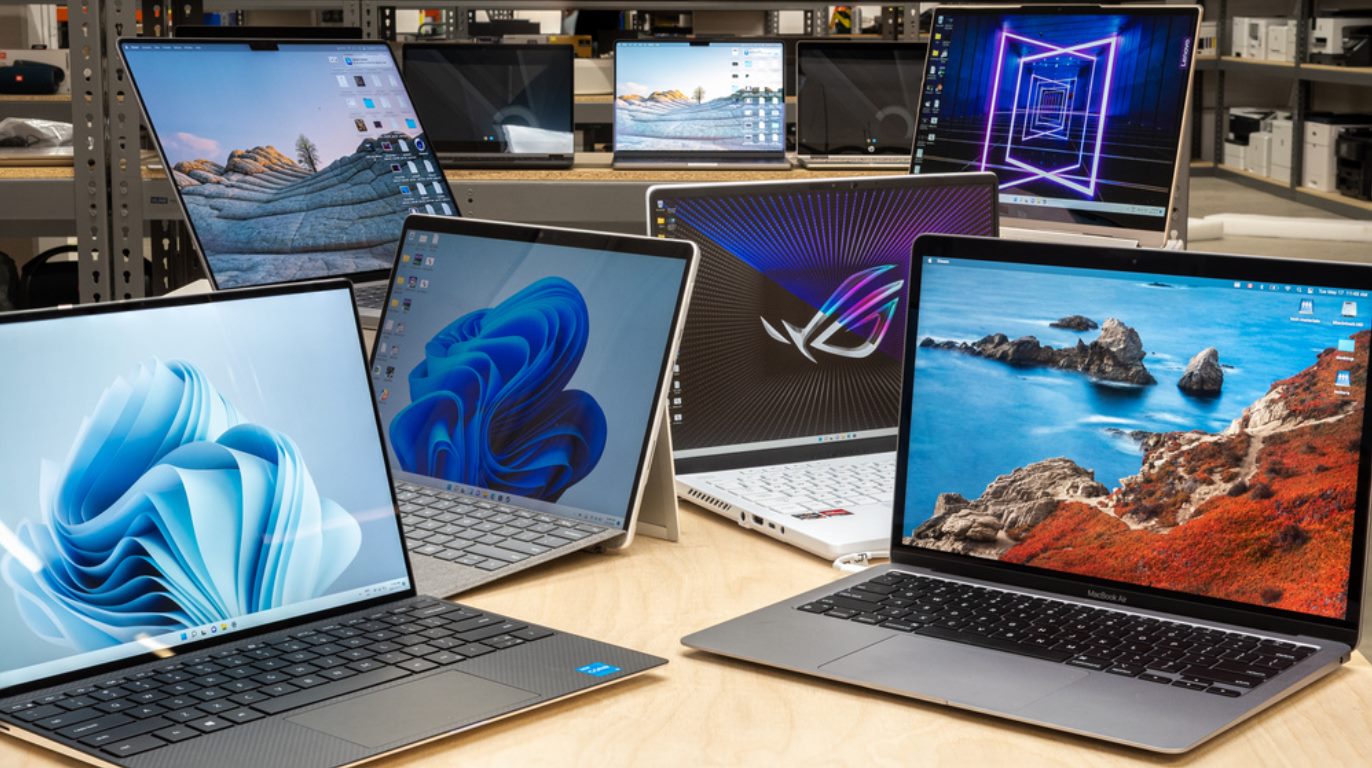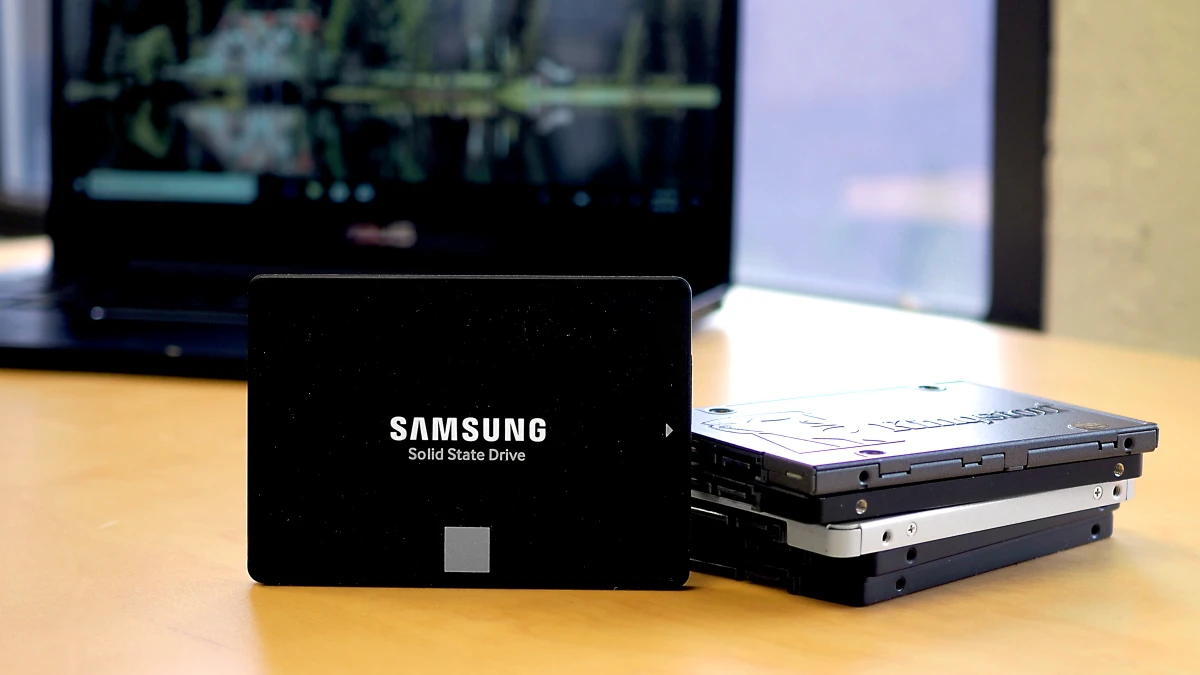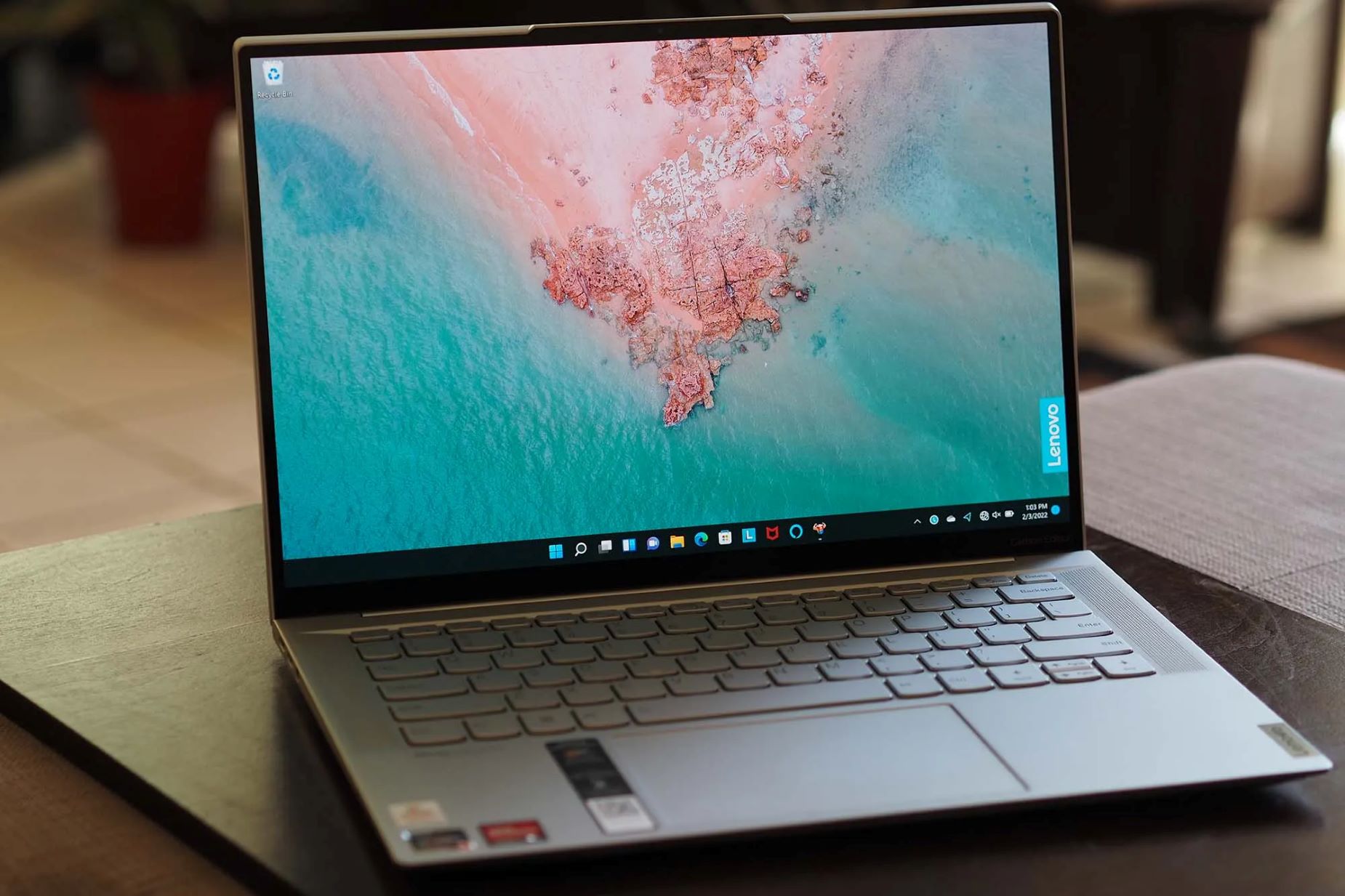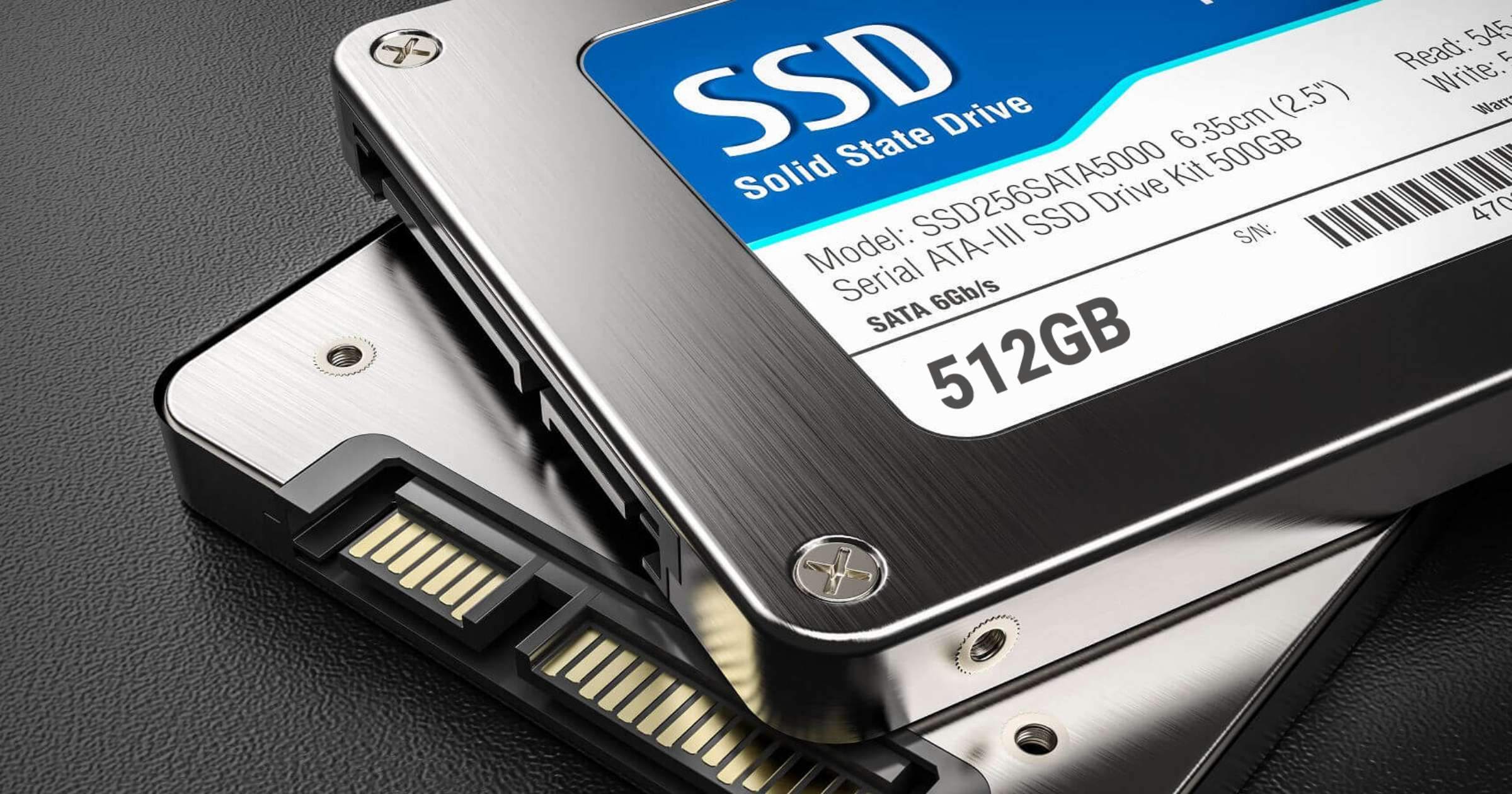Introduction
Welcome to the world of Lenovo laptops! If you recently purchased a Lenovo laptop and noticed that it has an empty solid-state drive (SSD), you may be wondering why. Don’t worry, you’re not alone in this confusion. Many Lenovo laptop users have encountered the same scenario and raised questions about it.
Before we dive into the details, let’s take a moment to understand what a solid-state drive (SSD) is and why it’s essential in modern laptops.
A solid-state drive, or SSD, is a storage device that uses flash memory to store data. Unlike traditional hard disk drives (HDDs), SSDs have no moving parts, which makes them faster, more reliable, and quieter. These benefits have made SSDs increasingly popular in the world of technology.
Lenovo laptops are known for their sleek designs, innovative features, and powerful performance. Many models come with SSDs pre-installed, offering users faster boot times, quicker file transfers, and better overall system responsiveness. However, if you find that your Lenovo laptop has an empty SSD, you may be wondering why Lenovo chose not to fill it with an operating system or other data.
In this article, we will explore the common reasons for an empty SSD in Lenovo laptops, the process of installing an operating system, why Lenovo might opt for empty SSDs, and how you can check if your laptop has an empty SSD. We will also provide guidance on resolving this issue if you’re facing it.
So, if you’re ready to delve into the world of Lenovo laptops and empty SSDs, let’s get started!
What is a Solid State Drive (SSD)?
A solid-state drive (SSD) is a type of storage device that is commonly used in modern computers, laptops, and other electronic devices. Unlike traditional hard disk drives (HDDs), which use spinning magnetic platters to store data, SSDs utilize flash memory technology.
Flash memory is a non-volatile type of memory that retains data even when the power is turned off. This makes SSDs more reliable and faster than HDDs. The absence of moving parts in SSDs also contributes to their speed and durability.
SSDs offer several advantages over HDDs. Firstly, they provide significantly faster data transfer speeds, allowing for quicker boot times and improved overall system performance. This means that applications load faster, files open more quickly, and the overall computing experience is smoother.
Secondly, SSDs are more resistant to physical shock and vibration. Since they don’t have any moving parts, they are less likely to be damaged due to accidental drops or impacts. This makes SSDs an ideal choice for laptops and portable devices that may be subjected to rough handling or travel.
Another notable advantage of SSDs is their quiet operation. Without the spinning platters of an HDD, SSDs generate little to no noise while in use, contributing to a quieter and more pleasant computing experience.
Furthermore, SSDs are more energy-efficient compared to HDDs. They require less power to operate, which can help prolong battery life in laptops and other portable devices. This is particularly beneficial for users who rely on their devices for extended periods without access to power outlets.
In summary, solid-state drives (SSDs) are high-performance storage devices that provide fast data transfer speeds, durability, quiet operation, and energy efficiency. These features make them a popular choice for modern laptops, including Lenovo laptops, which often come equipped with SSDs to enhance overall performance and user experience.
Advantages of Using a Solid State Drive (SSD)
Using a solid-state drive (SSD) in your laptop or computer brings numerous benefits over traditional hard disk drives (HDDs). Let’s explore some of the key advantages of using an SSD:
- Faster Performance: SSDs offer significantly faster data transfer speeds compared to HDDs. This means that your laptop will boot up faster, applications will load quickly, and files will be accessed without any noticeable delay. The improved speed enhances overall productivity and user experience.
- Reliability: Since SSDs don’t have any moving parts, they are more resistant to physical shock and vibration. This makes them less prone to failures caused by accidental drops or impacts. With increased reliability, you can have peace of mind knowing that your data is stored securely.
- Durability: Unlike HDDs, which rely on spinning magnetic platters, SSDs are built with solid-state components. This solid-state construction makes SSDs more durable and less susceptible to mechanical failures. This is especially valuable for laptop users who frequently move their devices around or travel.
- Energy Efficiency: SSDs require less power to operate compared to HDDs. The reduced power consumption translates to better battery life for laptops and lower electricity usage for desktops. This is particularly beneficial for users who rely on their devices for extended periods or prioritize energy conservation.
- No Noise: HDDs generate noise due to the spinning platter and moving read/write heads. In contrast, SSDs have no moving parts, resulting in silent operation. If you prefer a quiet working environment or enjoy watching movies or listening to music without distracting noises, an SSD is the perfect choice.
- Compact and Lightweight: SSDs are smaller and lighter than HDDs, making them ideal for portable devices like laptops and tablets. The compact size allows for thinner and lighter laptop designs, enhancing portability and convenience.
In summary, the advantages of using a solid-state drive (SSD) include faster performance, improved reliability and durability, energy efficiency, quiet operation, and a compact and lightweight design. These benefits make SSDs a desirable choice for laptops and computers, providing users with a superior computing experience.
Lenovo Laptops and SSDs
Lenovo, a renowned brand in the computer industry, offers a wide range of laptops that cater to the needs of different users. Many of Lenovo’s laptops come equipped with solid-state drives (SSDs) as a standard storage option. Let’s explore why Lenovo has embraced the use of SSDs and the benefits it brings to their laptops.
Lenovo recognizes the numerous advantages of SSDs over traditional hard disk drives (HDDs). By incorporating SSDs into their laptops, Lenovo aims to provide users with enhanced performance, reliability, and overall user experience.
One of the primary advantages of SSDs in Lenovo laptops is their role in improving system responsiveness. With an SSD, Lenovo laptops boot up faster, resume from sleep mode quickly, and launch applications within seconds. This results in a more efficient and productive workflow for users, especially those who rely on their laptops for demanding tasks.
Lenovo laptops with SSDs also benefit from improved battery life. SSDs consume less power compared to HDDs, allowing the laptop’s battery to last longer on a single charge. This is particularly advantageous for users who travel frequently and need their laptops to remain operational without access to power outlets.
Furthermore, using an SSD in Lenovo laptops contributes to a sleek and lightweight design. SSDs are smaller and lighter than HDDs, allowing Lenovo to create thinner and more portable laptop models. This is especially appealing to users who prioritize mobility and want a laptop that can easily be carried around throughout the day.
Lenovo ensures that their laptops provide ample storage space for users by offering a range of SSD capacities. Whether you need a laptop for basic tasks or a high-performance model for intensive multimedia editing, Lenovo has various SSD options to accommodate your specific needs.
Overall, Lenovo’s embrace of solid-state drives (SSDs) in their laptops highlights their commitment to delivering superior performance, enhanced battery life, and sleek designs. By incorporating SSDs into their laptops, Lenovo ensures that users can enjoy the benefits of faster boot times, improved system responsiveness, and a more efficient computing experience.
Common Reasons for an Empty SSD in a Lenovo Laptop
It can be surprising and confusing to find an empty solid-state drive (SSD) in your Lenovo laptop, especially if you expected it to have an operating system or other data pre-installed. There are several common reasons why Lenovo ships their laptops with empty SSDs:
- Customization Options: Lenovo recognizes that users have diverse needs and preferences when it comes to software and operating systems. By providing an empty SSD, Lenovo allows users to choose and install their preferred operating system and software without any pre-installed bloatware. This gives users the flexibility to customize their laptops according to their specific requirements.
- International Market: Lenovo is a global brand, catering to customers from various regions around the world. Different countries and regions may have specific software and language requirements. By shipping laptops with empty SSDs, Lenovo avoids potential issues related to language barriers, regional software variations, and licensing restrictions. This allows users to install the appropriate software and language settings based on their location.
- Storage Capacity: Lenovo offers a range of SSD options with different storage capacities to suit various user needs. By shipping laptops with empty SSDs, Lenovo allows users to choose the storage capacity that best fits their requirements. This ensures that users can maximize their storage space without being limited by pre-installed data or software they may not need.
- Data Privacy and Security: Shipping laptops with empty SSDs helps protect user privacy and security. By not pre-installing an operating system or any software, Lenovo ensures that no user data or personal information is stored on the SSD before the laptop reaches the customer. This reduces the risk of potential data breaches during transportation or storage.
- Upgradability: Lenovo laptops are often designed with upgradability in mind, allowing users to easily replace or upgrade their hardware components. By providing an empty SSD, Lenovo encourages users to take advantage of this upgradability by allowing them to install a new SSD or upgrade to a higher-capacity SSD of their choice.
These reasons highlight Lenovo’s commitment to delivering a personalized and customizable user experience. While finding an empty SSD in your Lenovo laptop may initially seem puzzling, it gives you the freedom to tailor your laptop’s software and storage according to your preferences, ensuring a more personalized and optimized computing experience.
The Operating System Installation Process for Lenovo Laptops
If you have a Lenovo laptop with an empty solid-state drive (SSD), you may wonder about the process of installing an operating system. While it may seem daunting, installing an operating system on a Lenovo laptop is relatively straightforward. Here’s a general overview of the operating system installation process:
- Prepare the Installation Media: You will need a bootable installation media, which is typically a USB flash drive or a DVD containing the operating system installation files. This media can be created using the official installation files provided by the operating system manufacturer or by using a third-party tool.
- Access the BIOS/UEFI Settings: Before you begin the installation process, access the BIOS/UEFI settings of your Lenovo laptop. You can usually do this by pressing a specific key (such as F1, F2, or Delete) repeatedly during the startup process. In the BIOS/UEFI settings, ensure that the SSD is detected and set as the primary boot device, if not already done.
- Insert the Installation Media: Insert the bootable installation media into the appropriate drive on your Lenovo laptop, whether it’s a USB port or the DVD drive.
- Boot from the Installation Media: Restart your Lenovo laptop and let it boot from the installation media. You might need to press a specific key (like F12) during startup to access the boot menu and choose the installation media as the boot device.
- Follow the Installation Wizard: Once the operating system installation process begins, follow the on-screen instructions provided by the installation wizard. You will typically be prompted to choose your preferred language, accept the license agreement, and select the installation location. Choose the empty SSD as the installation location.
- Customize Installation Settings (Optional): Depending on your preferences, you may be able to customize various installation settings, such as the partition layout or additional software components. This step is optional, but it allows you to tailor the installation process to your needs.
- Complete the Installation: Once all the necessary settings have been configured, allow the installation process to complete. This may take some time, depending on the speed of your Lenovo laptop and the size of the operating system being installed.
- Post-Installation Configuration: After the operating system is installed, you may need to perform post-installation configuration, where you set up user accounts, network settings, and update drivers or software to ensure optimal performance.
- Enjoy Your Lenovo Laptop: Once the installation and configuration process is complete, you can begin using your Lenovo laptop with the newly installed operating system on the empty SSD.
Remember, these steps serve as a general guide, and the specific process may vary depending on the operating system version and laptop model. It’s always a good idea to refer to the operating system’s documentation or Lenovo’s support resources for detailed instructions tailored to your specific laptop model.
Why Lenovo Might Choose to Ship Laptops with Empty SSDs
Lenovo, like other computer manufacturers, has specific reasons for choosing to ship laptops with empty solid-state drives (SSDs) instead of pre-installed operating systems or data. Let’s explore some of the possible reasons behind this decision:
- Customization and User Preference: By shipping laptops with empty SSDs, Lenovo allows users to have more freedom and flexibility in customizing their laptops. Users can choose and install their preferred operating system, software, and configurations without having to remove pre-installed bloatware or unwanted applications. This approach ensures a personalized computing experience tailored to individual needs and preferences.
- Localization and Regional Variations: Lenovo is a global company catering to customers all around the world. Various countries and regions have different language requirements, software preferences, and legal restrictions. By shipping laptops without pre-installed operating systems or software, Lenovo avoids potential issues related to regional variations and licensing restrictions. Users can install the appropriate operating system and software based on their specific location and language preferences.
- Data Privacy and Security: Lenovo prioritizes user privacy and security. By shipping laptops with empty SSDs, Lenovo ensures that no personal data or information is left on the SSD before it reaches the customer. This minimizes the risk of potential data breaches during transportation or storage.
- Storage Capacity and Upgrade Flexibility: Lenovo offers a range of SSD options with different capacities to accommodate diverse user needs. By providing empty SSDs, Lenovo enables users to choose the storage capacity that best suits their requirements. It also simplifies the process of upgrading to a larger SSD in the future, allowing users to expand their storage capacity without restrictions.
- Efficiency in Distribution and Logistics: Shipping laptops with empty SSDs simplifies the logistics and distribution process for Lenovo. It eliminates the need for pre-installing multiple operating system versions or software configurations, streamlining the production and shipping processes. This approach allows Lenovo to efficiently distribute laptops to diverse markets worldwide.
These reasons demonstrate Lenovo’s commitment to providing a seamless, customizable, and user-centric experience. While finding an empty SSD in your Lenovo laptop may initially seem surprising, this approach empowers users to personalize their laptops, ensures data privacy and security, accommodates regional and language preferences, and enables the flexibility to upgrade the storage capacity in the future.
How to Check If Your Lenovo Laptop Has an Empty SSD
If you are unsure whether your Lenovo laptop has an empty solid-state drive (SSD), there are several ways to check for its presence. Here are some methods you can use to determine if your laptop has an empty SSD:
- Physical Examination: Begin by examining your laptop’s exterior. Look for any SSD-specific labels or indicators on the laptop itself or in the laptop’s documentation. These labels may indicate the presence of an SSD or provide information about the storage configuration.
- Device Manager: Access the Device Manager on your Lenovo laptop to check for the presence of an SSD. You can access the Device Manager by right-clicking the Start button and selecting “Device Manager” from the menu. Once inside the Device Manager, expand the category labeled “Disk drives” or “Storage controllers” to see if an SSD is listed.
- BIOS/UEFI Settings: Restart your Lenovo laptop and access the BIOS/UEFI settings. You can usually enter the BIOS/UEFI settings by pressing a specific key (such as F1, F2, or Delete) repeatedly during startup. Once inside the BIOS/UEFI settings, navigate to the storage or drive configuration section. If an SSD is detected, it will be listed in the BIOS/UEFI settings screen.
- System Information: Use the System Information utility to gather information about your laptop’s hardware. To access this utility, press the Windows key + R to open the Run dialog box, then type “msinfo32” and hit Enter. In the System Information window, expand the “Components” category and select “Storage.” Look for the presence of an SSD in the list of installed storage devices.
- Lenovo Support: Visit the official Lenovo support website and enter your laptop’s model number or serial number. The support page for your specific laptop model may provide information about the storage configuration, including whether it comes with an SSD or not.
By using one or a combination of these methods, you can determine if your Lenovo laptop has an empty solid-state drive (SSD). If you discover that your laptop does indeed have an empty SSD, you have the flexibility to install an operating system and any desired software according to your preferences and needs.
Resolving the Issue of an Empty SSD in Your Lenovo Laptop
If you have a Lenovo laptop with an empty solid-state drive (SSD), you may be wondering how to resolve this issue and make use of the empty storage. Fortunately, there are several steps you can take to address this situation:
- Operating System Installation: The first step is to install an operating system on your Lenovo laptop’s empty SSD. Obtain the required installation media and follow the installation process, either from a DVD or a bootable USB drive. Choose the empty SSD as the installation destination during the installation process.
- Software and Drivers: Once the operating system is installed, make sure to download and install the necessary software and drivers for your Lenovo laptop. Visit the Lenovo support website and enter your laptop’s model number to access the drivers and software downloads specific to your laptop model. Install the drivers to ensure optimal hardware functionality and performance.
- Data Migration (If Necessary): If you have an existing computer or laptop with data you want to transfer to your Lenovo laptop’s SSD, consider using data migration tools. These tools allow you to clone or transfer data from your current system to your Lenovo laptop’s SSD. This can help in migrating files, applications, and settings seamlessly to your new laptop without the need to reinstall everything.
- Personalization and Configuration: After installing the operating system and necessary software, proceed with personalizing and configuring your Lenovo laptop to suit your preferences. Customize settings such as language, desktop appearance, power options, and security features according to your needs.
- Regular Maintenance: To keep your Lenovo laptop running smoothly, perform regular maintenance tasks. This includes keeping your operating system up to date with the latest security patches and software updates, running regular antivirus scans, and optimizing storage by removing unnecessary files or using disk cleanup tools.
- Backup and Data Protection: It’s essential to regularly back up your data to ensure its safety and protection. Consider using cloud storage services or external hard drives to create backups of your important files and documents. This practice can help prevent permanent data loss in case of hardware failure or accidental deletion.
By following these steps, you can effectively resolve the issue of an empty SSD in your Lenovo laptop. Utilizing the empty SSD allows you to install an operating system, set up your laptop according to your preferences, and enjoy the benefits of faster performance and improved storage capabilities.
Conclusion
In this article, we explored the topic of Lenovo laptops having empty solid-state drives (SSDs) and the reasons behind this decision. We learned that Lenovo ships laptops with empty SSDs to provide users with customization options, accommodate regional variations, ensure data privacy and security, offer storage capacity flexibility, and streamline distribution processes.
Additionally, we discussed the advantages of using SSDs in Lenovo laptops, such as faster performance, improved reliability, enhanced energy efficiency, quieter operation, and a compact design. SSDs have become increasingly popular due to their superior speed, durability, and power efficiency compared to traditional hard disk drives (HDDs).
We also provided insights into the operating system installation process for Lenovo laptops with empty SSDs. We discussed how to check if your Lenovo laptop has an empty SSD and outlined steps to resolve this issue, including installing the operating system, downloading necessary drivers and software, migrating data if needed, personalizing and configuring your laptop, and ensuring regular maintenance and data backup.
In conclusion, Lenovo’s decision to ship laptops with empty SSDs allows for greater customization, accommodates regional variations, ensures data privacy and security, and provides flexibility in storage capacity. By installing an operating system on the empty SSD and personalizing your Lenovo laptop according to your preferences, you can fully utilize the benefits of SSD technology and enjoy a fast, reliable, and customized computing experience.









